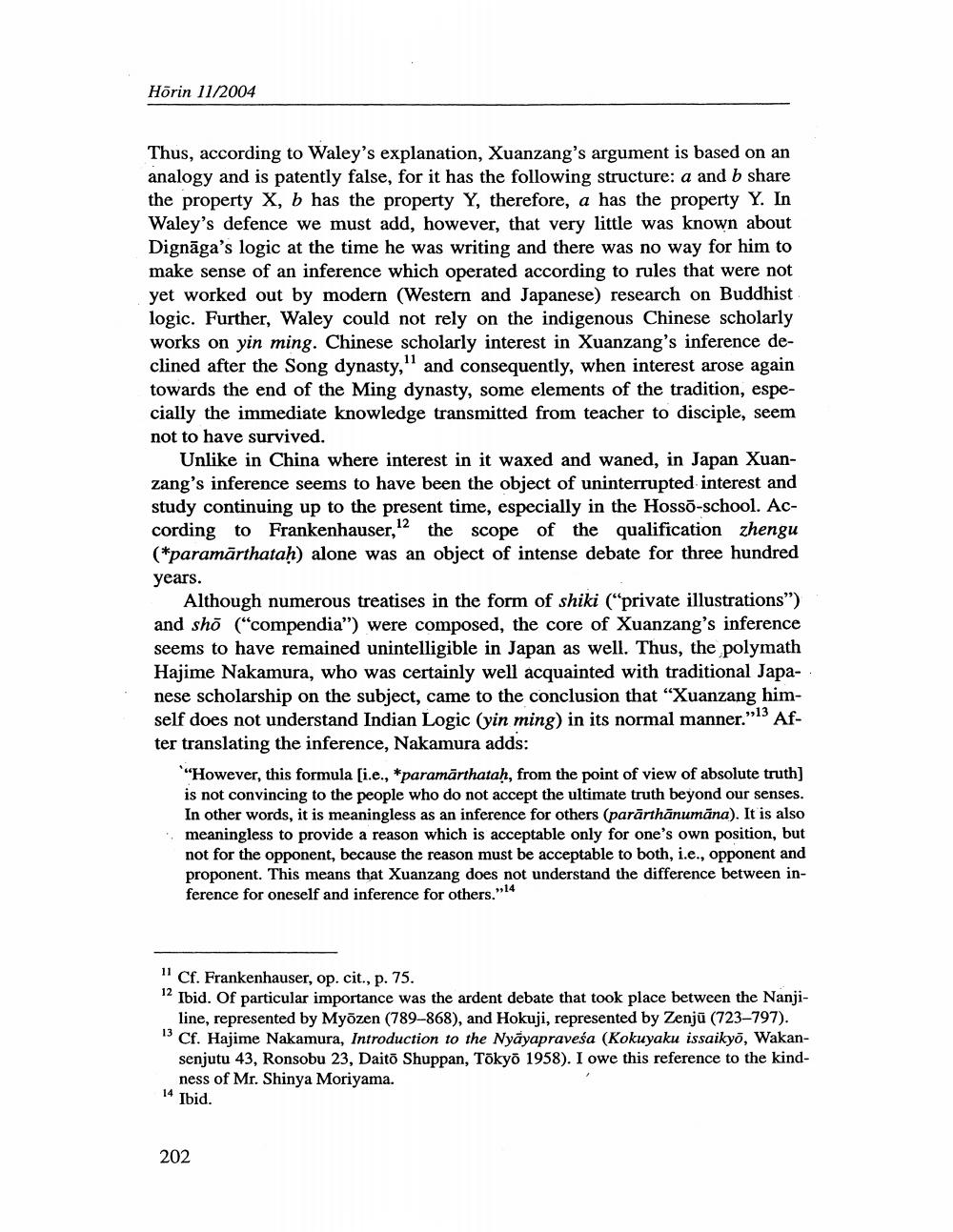________________
Hörin 11/2004
Thus, according to Waley's explanation, Xuanzang's argument is based on an analogy and is patently false, for it has the following structure: a and b share the property X, b has the property Y, therefore, a has the property Y. In Waley's defence we must add, however, that very little was known about Dignāga's logic at the time he was writing and there was no way for him to make sense of an inference which operated according to rules that were not yet worked out by modern (Western and Japanese) research on Buddhist logic. Further, Waley could not rely on the indigenous Chinese scholarly works on yin ming. Chinese scholarly interest in Xuanzang's inference declined after the Song dynasty," and consequently, when interest arose again towards the end of the Ming dynasty, some elements of the tradition, especially the immediate knowledge transmitted from teacher to disciple, seem not to have survived.
Unlike in China where interest in it waxed and waned, in Japan Xuanzang's inference seems to have been the object of uninterrupted interest and study continuing up to the present time, especially in the Hossb-school. According to Frankenhauser, 12 the scope of the qualification zhengu (*paramārthatah) alone was an object of intense debate for three hundred years.
Although numerous treatises in the form of shiki ("private illustrations”) and sho (“compendia") were composed, the core of Xuanzang's inference seems to have remained unintelligible in Japan as well. Thus, the polymath Hajime Nakamura, who was certainly well acquainted with traditional Japanese scholarship on the subject, came to the conclusion that “Xuanzang himself does not understand Indian Logic (yin ming) in its normal manner." After translating the inference, Nakamura adds:
"However, this formula [i.e., *paramārthatah, from the point of view of absolute truth] is not convincing to the people who do not accept the ultimate truth beyond our senses. In other words, it is meaningless as an inference for others (parārthānumāna). It is also meaningless to provide a reason which is acceptable only for one's own position, but not for the opponent, because the reason must be acceptable to both, i.e., opponent and proponent. This means that Xuanzang does not understand the difference between inference for oneself and inference for others."
1 Cf. Frankenhauser, op. cit., p. 75. 12 Ibid. Of particular importance was the ardent debate that took place between the Nanji
line, represented by Myõzen (789-868), and Hokuji, represented by Zenjū (723–797). 19 Cf. Hajime Nakamura, Introduction to the Nyāyapraveśa (Kokuyaku issaikyo, Wakan
senjutu 43, Ronsobu 23, Daito Shuppan, Tokyo 1958). I owe this reference to the kindness of Mr. Shinya Moriyama.
14 Ibid.
202




